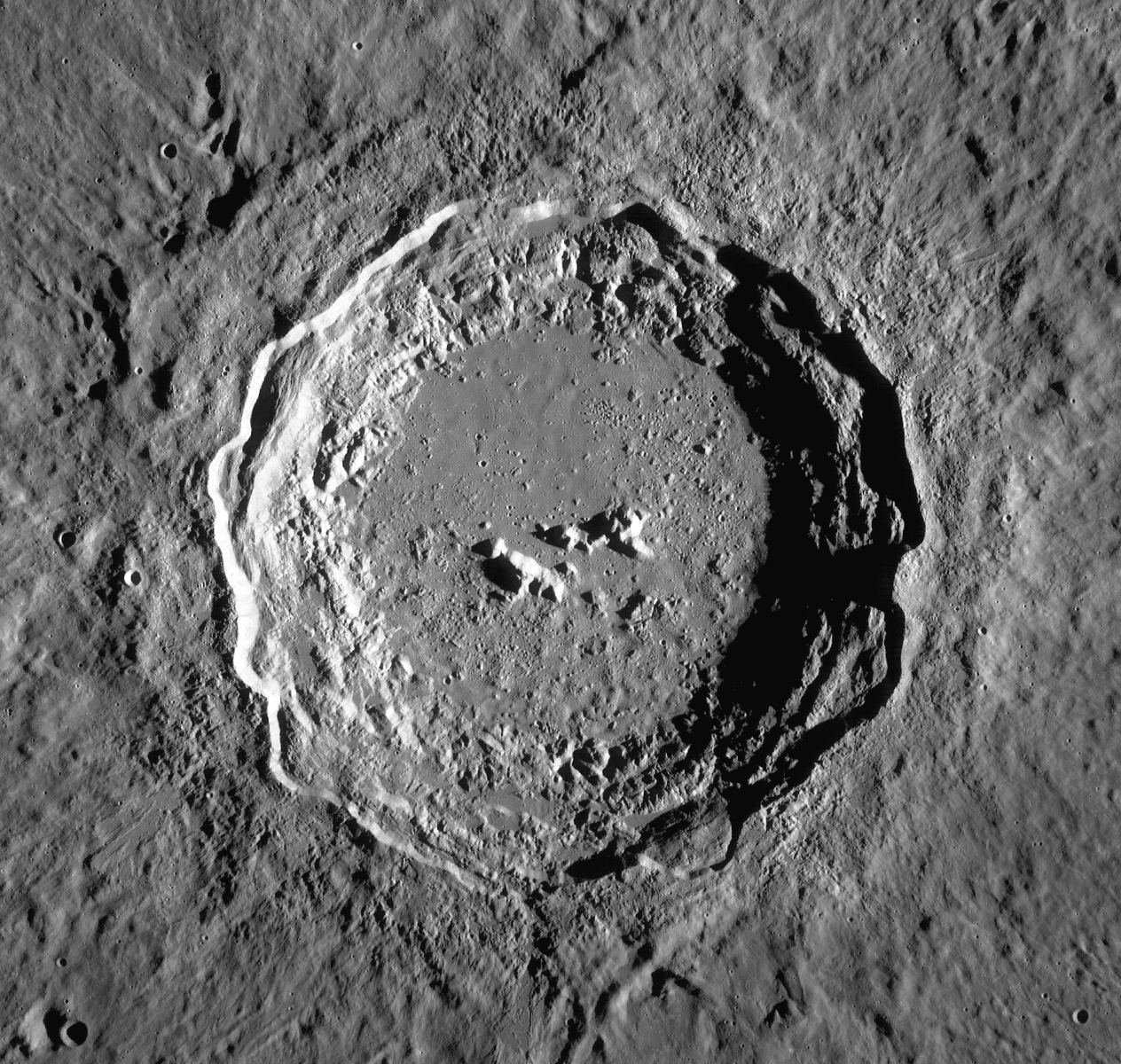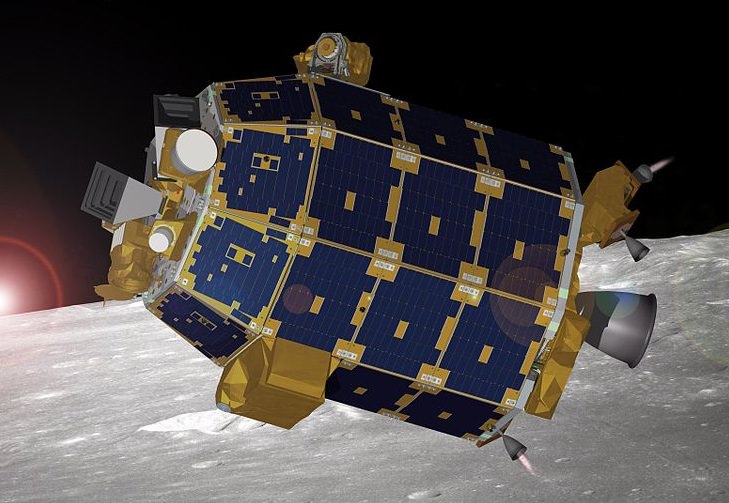In a recent study submitted to Earth and Planetary Astrophysics, a team of researchers from Yale University investigated how to identify impact craters that may have been created by Interstellar Objects (ISOs). This study is intriguing as the examination of ISOs has gained notable interest throughout the scientific community since the discoveries and subsequent research of ‘Oumuamua and Comet 2I/Borisov in 2017 and 2019, respectively. In their paper, the Yale researchers discussed how the volume of impact melt within fixed-diameter craters could be a possible pathway for recognizing ISO craters, as higher velocity impacts produce greater volumes of impact melt.
Continue reading “Impacts From Interstellar Objects Should Leave Very Distinct Craters”On The Origin Of Phobos’ Groovy Mystery
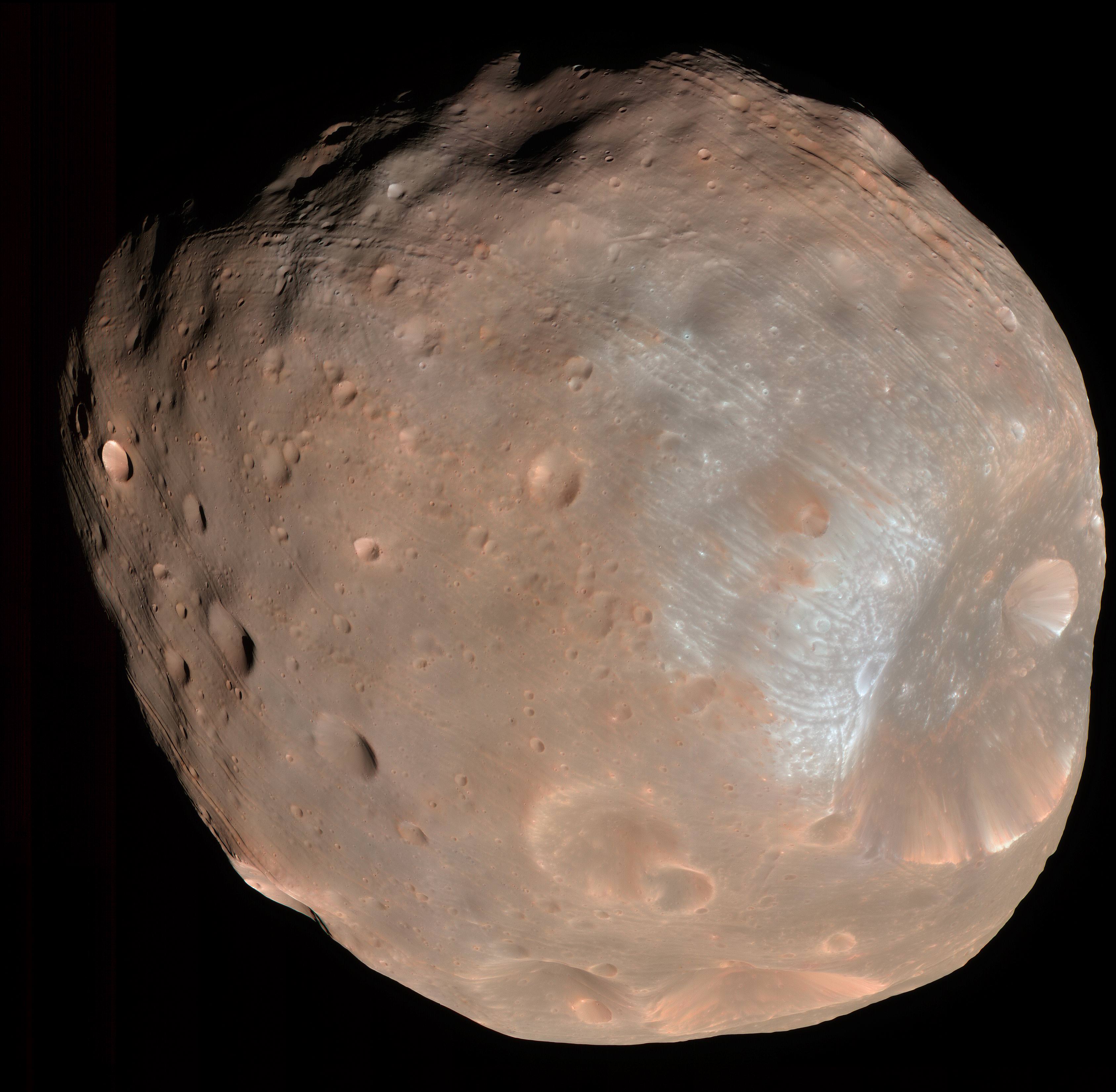
Mars’ natural satellites – Phobos and Deimos – have been a mystery since they were first discovered. While it is widely believed that they are former asteroids that were captured by Mars’ gravity, this remains unproven. And while some of Phobos’ surface features are known to be the result of Mars’ gravity, the origin of its linear grooves and crater chains (catenae) have remained unknown.
But thanks to a new study by Erik Asphaug of Arizona State University and Michael Nayak from the University of California, we may be closer to understanding how Phobos’ got its “groovy” surface. In short, they believe that re-accretion is the answer, where all the material that was ejected when meteors impacted the moon eventually returned to strike the surface again.
Naturally, Phobos’ mysteries extend beyond its origin and surface features. For instance, despite being much more massive than its counterpart Deimos, it orbits Mars at a much closer distance (9,300 km compared to over 23,000 km). It’s density measurements have also indicated that the moon is not composed of solid rock, and it is known to be significantly porous.
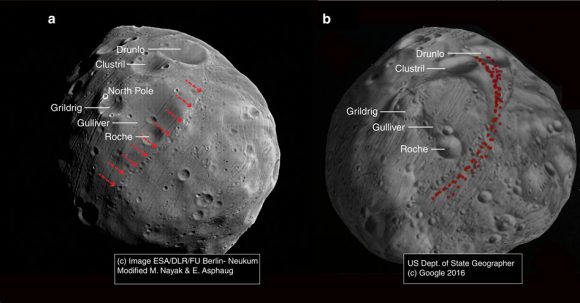
However, this action cannot account for another common feature on Phobos, which are the striation patterns (aka. grooves) that run perpendicular to the stress fields. These patterns are essentially chains of craters that typically measure 20 km (12 mi) in length, 100 – 200 meters (330 – 660 ft) in width, and usually 30 m (98 ft) in depth.
In the past, it was assumed that these craters were the result of the same impact that created Stickney, the largest impact crater on Phobos. However, analysis from the Mars Express mission revealed that the grooves are not related to Stickney. Instead, they are centered on Phobos’ leading edge and fade away the closer one gets to its trailing edge.
For the sake of their study, which was recently published in Nature Communications, Asphaug and Nayak used computer modeling to simulate how other meteoric impacts could have created these crater patterns, which they theorized were formed when the resulting ejecta circled back and impacted the surface in other locations.
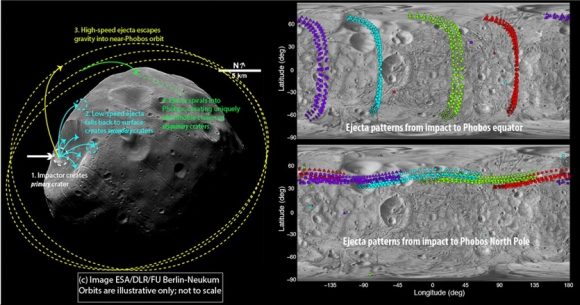
As Dr. Asphaug told Universe Today via email, their work was the result of a meeting of minds that spawned an interesting theory:
“Dr. Nayak had been studying with Prof. Francis Nimmo (of UCSC), the idea that ejecta could swap between the Martian moons. So Mikey and I met up to talk about that, and the possibility that Phobos could sweep up its own ejecta. Originally I had been thinking that seismic events (triggered by impacts) might cause Phobos to shed material tidally, since it’s inside the Roche limit, and that this material would thin out into rings that would be reaccreted by Phobos. That still might happen, but for the prominent catenae the answer turned out to be much simpler (after a lot of painstaking computations) – that crater ejecta is faster than Phobos’ escape velocity, but much slower than Mars orbital velocity, and much of it gets swept up after several co-orbits about Mars, forming these patterns.”
Basically, they theorized that if a meteorite stuck Phobos in just the right place, the resulting debris could have been thrown off into space and swept up later as Phobos swung back around mars. Thought Phobos does not have sufficient gravity to re-accrete ejecta on its own, Mars’ gravitational pull ensures that anything thrown off by the moon will be pulled into orbit around it.
Once this debris is pulled into orbit around Mars, it will circle the planet a few times until it eventually falls into Phobos’ orbital path. When that happens, Phobos will collide with it, triggering another impact that throws off more ejecta, thus causing the whole process to repeat itself.
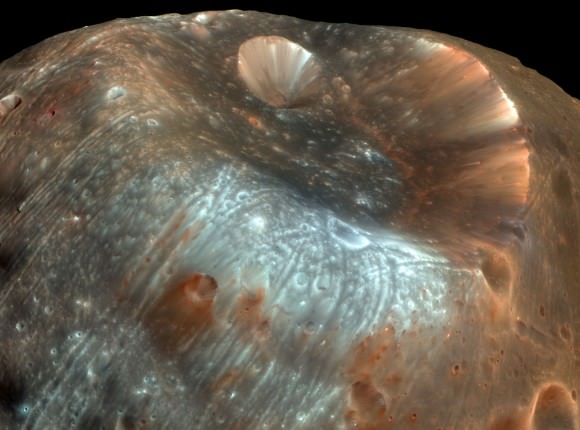
In the end, Asphaug and Nayak concluded that if an impact hit Phobos at a certain point, the subsequent collisions with the resulting debris would form a chain of craters in discernible patterns – possibly within days. Testing this theory required some computer modeling on an actual crater.
Using Grildrig (a 2.6 km crater near Phobos’ north pole) as a reference point, their model showed that the resulting string of craters was consistent with the chains that have been observed on Phobos’ surface. And while this remains a theory, this initial confirmation does provide a basis for further testing.
“The initial main test of the theory is that the patterns match up, ejecta from Grildrig for example,” said Asphaug. “But it’s still a theory. It has some testable implications that we’re now working on.”
In addition to offering a plausible explanation of Phobos’ surface features, their study is also significant in that it is the first time that sesquinary craters (i.e. craters caused by ejecta that went into orbit around the central planet) were traced back to their primary impacts.
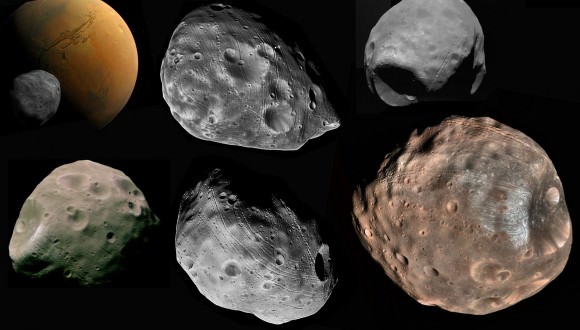
In the future, this kind of process could prove to be a novel way to assess the surface characteristics of planets and other bodies – such as the heavily cratered moons of Jupiter and Saturn. These findings will also help us to learn more about Phobos history, which in turn will help shed light on the history of Mars.
“[It] expands our ability to make cross-cutting relationships on Phobos that will reveal the sequence of geologic history,” Asphaug added. “Since Phobos’ geologic history is slaved to the tidal dissipation of Mars, in learning the timescale of Phobos geology we learn about the interior structure of Mars”
And all of this information is likely to come in handy when it comes time for NASA to mount crewed missions to the Red Planet. One of the key steps in the proposed “Journey to Mars” is a mission to Phobos, where the crew, a Mars habitat, and the mission’s vehicles will all be deployed in advance of a mission to the Martian surface.
Learning more about the interior structure of Mars is a goal shared by many of NASA’s future missions to the planet, which includes NASA’s InSight Lander (schedules for launch in 2018). Shedding light on Mars geology is expected to go a long way towards explaining how the planet lost its magnetosphere, and hence its atmosphere and surface water, billions of years ago.
Further Reading: Nature Communications
How Amateur Astronomers Can Help LADEE
You can help NASA’s upcoming lunar mission.
NASA’s Lunar Atmosphere and Dust Environment Explorer (LADEE) is slated to lift off from Wallops Island this September 5th in a spectacular night launch. LADEE will be the first mission departing Wallops to venture beyond low Earth orbit. A joint collaboration between NASA’s Goddard Spaceflight Center & the AMES Research Center, LADEE will study the lunar environment from orbit, including its tenuous exosphere.
Scientists hope to answer some long standing questions about the lunar environment with data provided by LADEE. How substantial is the wispy lunar atmosphere? How common are micro-meteoroid impacts? What was the source of the sky glow recorded by the Surveyor spacecraft and observed by Apollo astronauts before lunar sunrise and after lunar sunset while in orbit?
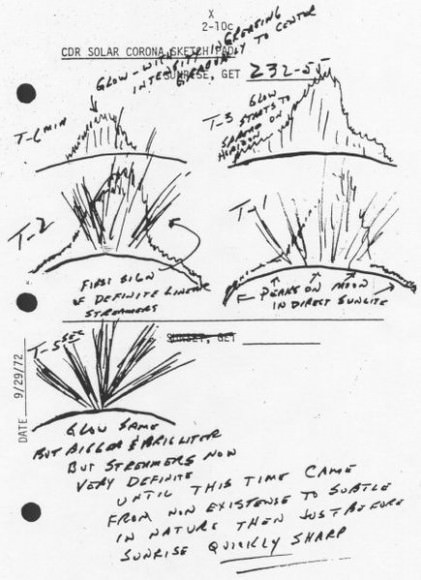
The micro-meteoroid issue is of crucial concern for any future long duration human habitation on the Moon. The Apollo missions were only days in length. No one has ever witnessed a lunar sunrise or sunset from the surface of the Moon, as all six landings occurred on the nearside of the Moon in daylight. (Sunrise to sunset on the Moon takes about two Earth weeks!)
And that’s where amateur astronomers come in. LADEE is teaming up with the Association of Lunar & Planetary Observers (ALPO) and their Lunar Meteoritic Impact Search Program in a call to watch for impacts on the Moon. These are recorded as brief flashes on the nighttime side of the Moon, which presents a favorable illumination after last quarter or leading up into first quarter phase.
We wrote recently about a +4th magnitude flash detected of the Moon on March 17th of this year. That explosion was thought to have been caused by a 35 centimetre impactor which may have been associated with the Eta Virginid meteor shower. The impact released an explosive equivalent of five tons of TNT and has set a possible new challenge for Moon Zoo volunteers to search for the resulting 6 metre crater.
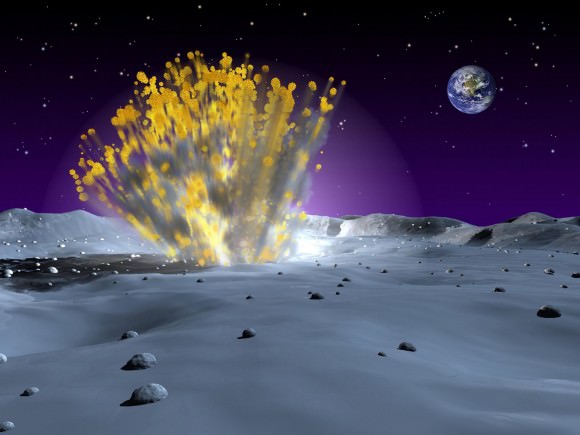
We’ve also written about amateur efforts to document transient lunar phenomena and studies attempting to pinpoint a possible source of these spurious glows and flashes on the Moon observed over the years.
NASA’s Meteoroid Environment Office is looking for dedicated amateurs to take part in their Lunar Impact Monitoring campaign. Ideally, such an observing station should utilize a telescope with a minimum aperture of 8 inches (20cm) and be able to continuously monitor and track the Moon while it’s above the local horizon. Most micro-meteoroid flashes are too fast and faint to be seen with the naked eye, and thus video recording will be necessary. A typical video configuration for the project is described here. Note the high frame rate and the ability to embed a precise time stamp is required. I’ve actually run WWV radio signals using an AM short wave radio transmitting in the background to accomplish this during occultations.
Finally, you’ll need a program called LunarScan to analyze those videos for evidence of high speed flashes. LunarScan is pretty intuitive. We used the program to analyze video shot during the 2010 Total Lunar Eclipse for any surreptitious Geminid or Ursid meteors.
Brian Cudnik, coordinator of the Lunar Meteoritic Impact Search section of the ALPO, noted in a recent forum post that we’re approaching another optimal window to accomplish these sorts of observations this weekend, with the Moon headed towards last quarter on June 30th.
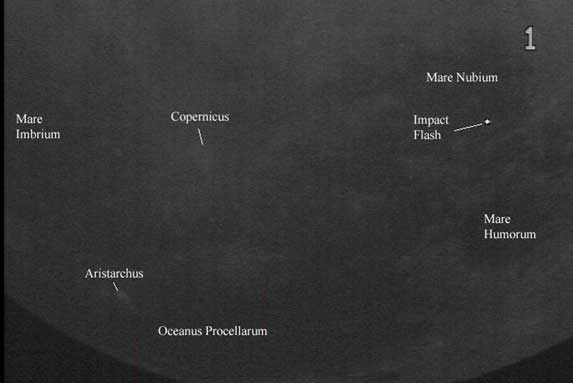
Interestingly, the June Boötids are currently active as well, with historical sporadic rates of anywhere from 10-100 per hour. In 1975, seismometers left by Apollo astronauts detected series of impacts on June 24th thought to have been caused by one of two Taurid meteor swarms the Earth passes through in late June, another reason to be vigilant this time of year.
Don’t have access to a large telescope or sophisticated video gear? You can still participate and make useful observations.
LADEE is also teaming up with JPL and the Lewis Center for Educational Research to allow students track the spacecraft en route to the Moon. Student groups will be able to remotely access the 34-metre radio telescopes based at Goldstone, California that form part of NASA’s Deep Space Communications Network. Students will be able to perform Doppler measurements during key mission milestones to monitor the position and status of the spacecraft during thruster firings.
And backyard observers can participate in another fashion, using nothing more than their eyes and patience. Meteor streams that are impacting the Moon affect the Earth as well. The International Meteor Organization is always looking for information from dedicated observers in the form of meteor counts. The Perseids, an “Old Faithful” of meteor showers, occurs this year around August 12th under optimal conditions, with the Moon only five days past New. This is also three weeks prior to the launch of LADEE.
Whichever way you choose to participate, be sure to follow the progress of LADEE and our next mission to study Earth’s Moon!
-Listen to Universe Today’s Nancy Atkinson and her interview with Brian Day of the NASA Lunar Science Institute.
-Also listen to the 365 Days of Astronomy interview with Brian Day and Andy Shaner from the Lunar Planetary institute on the upcoming LADEE mission.

